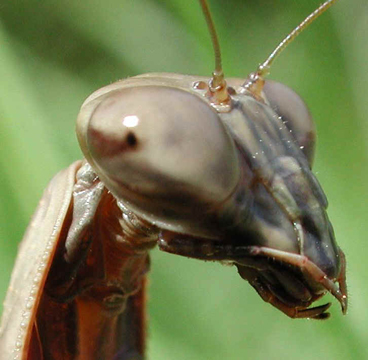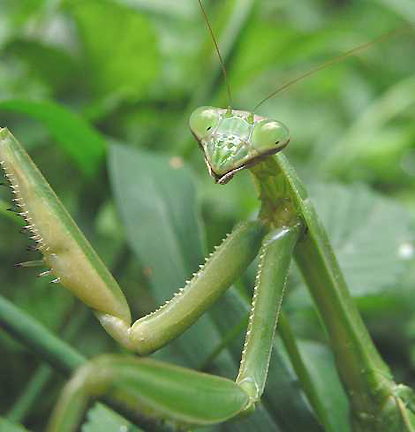“I wondered if the entity’s eyes were some kind of lens covering on the eyes that might be used to analyze things or see different wavelengths around - like welding goggles, they reflect light and only allow so much light in.”
- “Joshua Rhinehall,” Private Investigator, Pacific Northwest



[ Editor's Note: Wikipedia - Mantodea or mantises is an order of insects that contains approximately 2,200 species in nine families worldwide in temperate and tropical habitats. Most of the species are in the family Mantidae. A colloquial name for the order is “praying mantises,” because of their often prayer-like stance, although the term is often misspelled as “preying mantis” because mantises are predatory. Insects form their primary diet, but larger species have been known to prey on small lizards, frogs, birds, snakes, fish, even rodents and any species small enough to successfully capture and devour. Most species of mantis are known to engage in cannibalism. Their large eyes can see up to 60 feet away and the mantis lashes out at remarkable speed to ambush its prey. ]
Return to Part 1.
January 17, 2011 Pacific Northwest - Joshua Rhinehall continues from Part 1 his descriptions of extraordinary encounters with non-humans that began for him at age 4 and have persisted to the current day, now age 46.
Click here to subscribe and get instant access to read this report.
Click here to check your existing subscription status.
Existing members, login below:
© 1998 - 2024 by Linda Moulton Howe.
All Rights Reserved.

